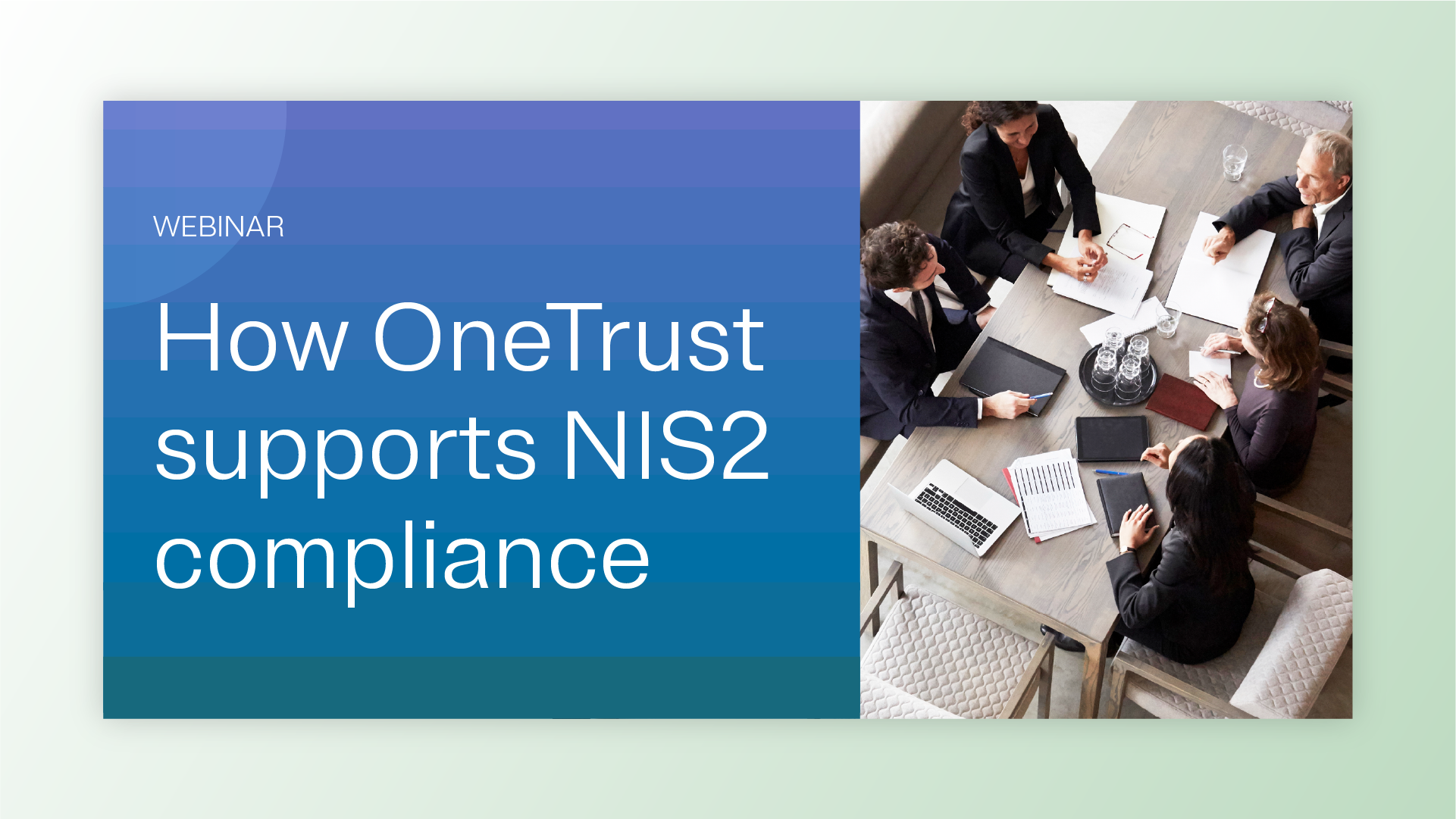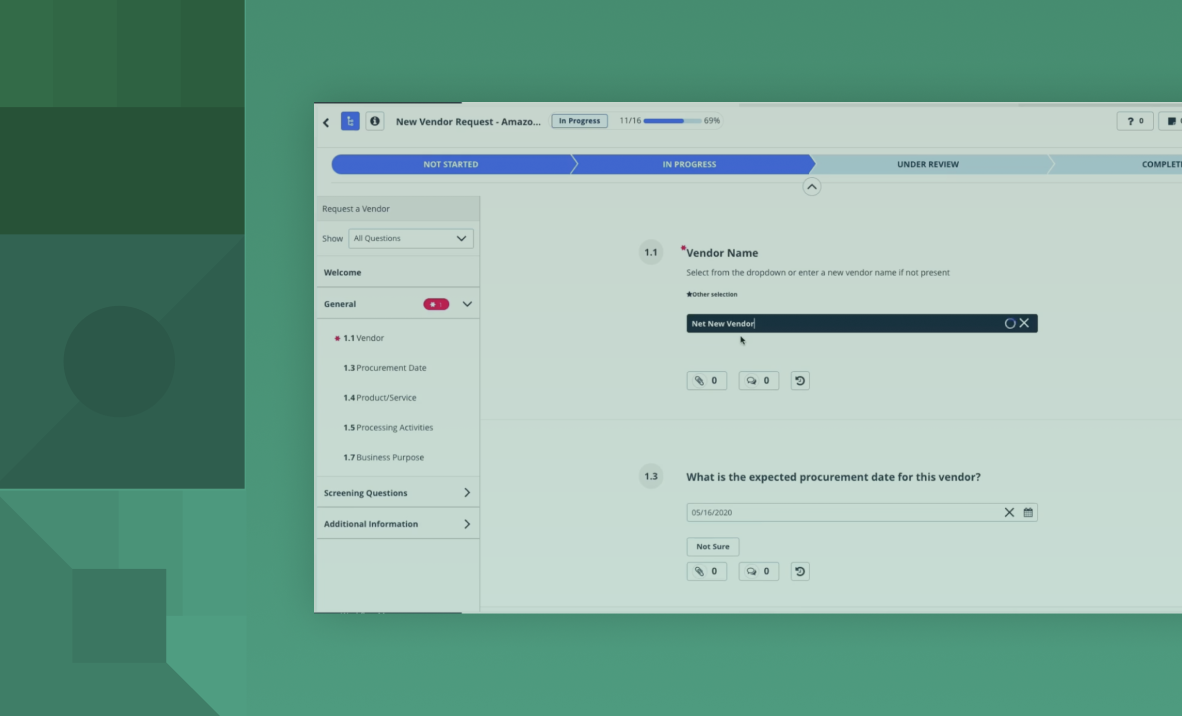Third-Party Risk Management (TPRM) is the way that a company looks at vendor relationships and manages the risks that they pose to their overall organizational security. In 2021, TPRM and cybersecurity remained at the forefront of business strategies, citing events like ransomware attacks in the oil and gas industry, new executive orders, changing regulations, and newly introduced regulations. More recently, Ethics, and ESG, have come to the forefront of TPRM programs, leading to major shifts in the way that professionals across industries and risk domains are approaching their security and privacy strategies. So, what does this mean for what’s to come in 2022? Let’s dive into OneTrust’s 2022 TPRM predictions.
Read our blog to dive into a detailed look at third-party risk management.
TPRM predictions for 2022
The ransomware trend continues
Following a 62% global attack spike (158% increase in North American attacks alone), ransomware is predicted to continue in growth through 2022. As an exemplary year in high-profile ransomware cases and ransomware defense success stories, 2021 highlighted a need for security teams to rapidly tailor their incident management response strategies to consider ransomware threats. Before the year concludes, ransomware threats are predicted to have a collective amount of 20 billion USD, making it the fastest-growing type of cybercrime.
TPRM awareness and regulation increases
Over the last year, the most consistently seen security trend has been the global impact of cyber threats from attacks on pipelines to farming co-ops. Additionally, the cost of a successful breach ranges from $1 Million to $500 million USD, and global cybersecurity spending was projected to exceed $1 trillion this year
Fiscal implications are only one of many devastating effects of cybersecurity incidents. Unfortunately, the effect of these attacks goes far beyond the fiscal impact on a company or sector. Often, it involves putting civilians at risk of having their data compromised or having a broader economic effect on the community. Often, attacks leave individual data at risk or target critical national infrastructure, impacting the day-to-day of unsuspecting civilians across nations. Due to the impact of such events, global governments acted at federal levels to protect their citizens and networks. As the civilian impact increases and lives and commerce are put at risk, we will see increasing regulation from the federal government.
TPRM expands across risk domains
In 2021 the TPRM industry underwent major shifts, one of which included an increased emphasis on the criticality of Ethics and ESG in TPRM. The push for professionals to consider TPRM across subject matter like third-party due diligence and supplier sustainability has been one of the most notable changes of 2021. As a result, the community will continue to embrace the shift in 2022 and TPRM programs will need to adjust to consider vendor risk as it related to key environmental issues like:
- Sustainability
- Climate Change
- Deforestation
- Water
- Waste
- The transition to a circular economy
- Voluntary Reporting
- Labor relations
- Diversity and inclusion issues
- Health and safety conditions
- Human rights and labor standards when dealing with their own employees, as well as with third-party suppliers, customers, and the community at large
- Tax avoidance
- Executive pay
- Corruption
- Director nomination
- Company leadership
- Executive pay
- Audits
- Internal controls
- Shareholder rights
Read the blog: What does TPRM look like for the Chief Sustainability Officer (CSO)?
The shift to third-party trust management
In tandem with the TPRM’s expansion across risk domains, companies are being called to shift to a strategy focused on Trust, of which Third-Party Trust Management (TPTM) is a key facet.
TPTM is a critical consideration when standing up an enterprise trust strategy. Enterprise trust is a driver of business development that depends on cross-domain collaboration. The risk domains of trust are Ethics, ESG, Privacy, and Security, and when considered under the lens of trust, each domain must assess trust risk factors in a way that plans for overall business resiliency and continuity.
Specifically, Third-Party Trust Management is a discipline of enterprise trust in which each silo (Ethics, ESG, Security, Privacy) is considered through a TPRM lens.
The TPRM scope broadens to more directly consider 4th and Nth parties
As regulation increases and critical incidents continue to rise, the scope of TPRM is moving toward a model where 4th and Nth parties are considered equally as critical to the security of the corporate ecosystem as 3rd parties and partners. The shift will help drive security-related business strategy, inform incident prevention, and empower companies to view their vendor ecosystem through a compliance and risk-driven lens.
How can OneTrust help with 2022 TPRM predictions?
The OneTrust platform leverages expertise in GRC, specializing in Third-Party Risk Management, Privacy, Incident Management, and many other categories to deliver an immersive security and privacy management experience. Reduce your vendor, supplier, and third-party risks with OneTrust Vendorpedia™ Third-Party Risk Management Software and Exchange Community. The software enables you to run compliance checks and screen vendors. Additionally, our software empowers organizations to conduct vendor risk assessments and mitigate risks through highly customizable workflow automation.
Our Vendorpedia Exchange Community enables you to order access to risk analytics and control gap reports on all your vendors, allowing your organization to collect comprehensive risk data and share it with your shareholders and partners. Additionally, OneTrust Vendorpedia’s ISS ESG Risk Score integration provides companies with visibility into the sustainability & responsibility of their vendors, a key aspect in standing up a holistic TPTM.
Follow OneTrust on LinkedIn, Twitter, or YouTube for the latest on digital transformation.


















